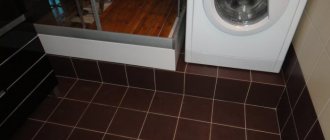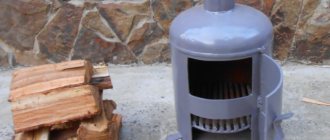03/28/2017 by admin No comments
How does a cone (plug) valve work? Where are these products used? For example, what is the 11B6BK DU50
? How good are such shut-off valve elements in water supply and heating systems compared to alternatives? Let's try to answer these questions.
Our hero.
How to lubricate a gas tap on a stove
If it’s quick and homely, then you can use a CV joint or lithol, but if you want something good, then...
Lubricant LZ-GAZ-41 (TU 0254-322-00148820-98) is intended for lubrication of plug valves of household gas equipment. Has the ability to rub in rubbing surfaces, improving the tightness of faucets as they operate
. LZ-GAZ-41 lubricant has high temperature and chemical resistance, is insoluble in water, and non-aggressive towards valve materials
household gas stoves.
LZ-GAZ-41 lubricant is made on the basis of mineral oil thickened with lithium-calcium soap with the addition of anti-corrosion and antioxidant additives and solid fillers - molybdenum disulfide and acetylene black
.
When I needed such a thing, I went to Gorgaz (on Krasnoznamenaya Street) thinking to catch some repairman there and ask him for a little bit of this stuff... After walking a little along the fence (they were having lunch or something), I suddenly discovered as such an uncle to his brother (IMG:style_emoticons/default/blink.gif) (I didn’t even know that he was already working there)… but another one might turn up. (IMG:style_emoticons/default/smile.gif) Now there seems to be a shop there, in the same building, but is there any lubricants there...?
By the way, there is no need for special heat resistance, the main thing is good sealing and long-term reliability.
In principle, you can take a small file and plan a soft lead from a simple pencil. Mix it with the same lithol or cyatim and it will be like a heat-resistant lubricant.
Graphite will not add any heat resistance. The taps are lubricated with a lubricant with an operating temperature of up to 150 degrees; this is not a heat-resistant lubricant at all. The durability of the lubricant is determined by the lather, not the graphite.
Theorists? Graphite grease is better. Even after many years of use, if it dries out, it can be removed more easily than a stuck-on regular one. When operating with the oven door slightly open (when drying mushrooms, for example), more heat is supplied to the taps than usual. So it’s better not to engage in perversion, but to buy normal lubricant, since it’s quite inexpensive.
Even after many years of use, if it dries out, it can be removed more easily than a stuck-on regular one.
When operating with the oven door slightly open (when drying mushrooms, for example), more heat is supplied to the taps than usual. So it’s better not to engage in perversion, but to buy normal lubricant, since it’s quite inexpensive.
More, how much is it?
Mobilegriz is much better than the one from the gas workers.
What does graphite have to do with it? Drying depends on the base and soap.
More, how much is it? No higher than 150 degrees in any case, otherwise the handles will burn and melt. Mobilegriz is much better than the one from the gas workers.
I don’t understand, are you a gas fitter or an air conditioner? Can you help me install a simple split system if I buy it? How much do your services cost? Look, I’ll install the outdoor and indoor units myself, where it’s convenient for me. I did all the electrical work myself. There are either four or five wires. I just need to connect the tubes, pump out the air, and make sure everything floats properly. I don't have such a tool.
A positive feature of Soviet gas taps is their long service life and maintainability. However, such a faucet requires regular maintenance, since the tightness of such a device is ensured by grinding the faucet plug to the body; read more about this in our article.
The appearance of a gas smell in the area of the plug valve is not a reason to replace it, but you will still have to call a gas service representative to eliminate the cause of the leak.
This article describes step by step the process of revising the two most popular gas plug valves: coupling and tension. Please note that this article is not a call to action, but is offered solely for informational purposes, since gas-hazardous work must be carried out by specialized organizations that have the necessary permits. It will be useful to those who want to personally verify the quality of the tap inspection performed by the gas service.
Universal sealing thread.
This tape is made from nylon and impregnated with a special compound. The most popular of them are the threads “Unilok” (produced in the European Union) and “Record”, produced in Russia.
Advantages of a universal thread:
- Ease of use
- The most advanced method of sealing threaded connections in our time.
- Low cost.
- High connection reliability.
- Withstands temperatures up to 130 degrees Celsius.
- Perfectly seals the gas pipeline.
- Possibility of installation at low temperatures or on wet surfaces (other types of sealants cannot be used in such conditions).
Disadvantages of universal thread:
- Cannot be used when installing an oil pipeline.
- Not the most reliable sealing of large diameter pipes.
- The need for roughness on the thread.
The universal sealing thread has almost no disadvantages and has a relatively low price, so this method of sealing can be called optimal.
Preparatory work
Before you begin inspecting the gas tap, you need to find out whether the tap is actually the source of the leak. To do this, you need to wash the tap by applying foam to the connections. We find places where gas is leaking to make sure that the valve is indeed the cause of the leak.
To carry out an inspection, there is no need to remove the gas valve from the gas pipeline. In this article, this is done solely for clarity of the process. However, it is necessary to shut off the gas supply to the gas pipeline and relieve the pressure, and also warn your neighbors to turn off all gas-consuming appliances!
Sealing of household air ducts
Ventilation in apartments and country houses is carried out using thin-walled elements. Often, air ducts are made of rectangular cross-section or from corrugated pipe. Threading on such connections is not possible. Therefore, sealing ventilation joints is carried out in other ways:
- through flanges,
- applying a bandage,
- using the socket method by inserting one air duct into another.
A flange connection is most often used for non-circular ducts. Sealing is carried out using gaskets made of soft material, for example, porous rubber. The shape of the gasket must match the cross-section of the air duct.
With other methods, the voids formed after joining the air ducts are filled with mastics whose temperature characteristics correspond to the operating conditions of the air line. Sometimes the joint of the air ducts is wrapped with self-adhesive tape.
Bandage clamps used for joining round air ducts
Solving the problems of plug valves in modern versions
got rid of my plug taps
from these disadvantages, thanks to the use of
a special
seal that
prevents
the plug from sticking, therefore they are very
easy
to operate and very popular when used with aggressive and abrasive media, for example for installation on pipelines with brine.
FluoroSeal to solve your seal
, uses specially patented adjustment
tight fit of the plug to the seat.
The process is very simple
, there is a small bolt on the outside of the case that can be tightened with a regular hex key; when it is tightened, the plug moves and increases the tightness of the fit. The same mechanism decides
the problem
of repair
when the seal wears out, in such cases the seal density simply
increases
and thereby
restores
the previous performance
without stopping
the technological process for repairs and maintenance.
Ensuring the tightness of plug valves
To ensure tightness
tap and ease of turning the shutter, various manufacturers use several
options, including
lubrication system is also used
in the valve body, and for valves used for pumping
oil with a high level
of paraffin
, a
heating
.
Application areas for plug valves
Plug valves are used on many pipelines in the following areas:
Plug valve for petroleum products
Plug valves for alkylation processes
Plug valves for aggressive media
Fluoroplastic tapes (FUM)
This thin film has currently gained great popularity in our country, and a couple of decades ago it was almost impossible to find it on our market.
The advantages of FUM tape include chemical resistance and ease of installation. PTFE tape has a number of disadvantages. For example, it does not provide a high level of sealing and is likely to jump out of the threaded connection in the event of a change in temperature with all the ensuing consequences. Poor sealing of joints subject to vibration, poor sealing of joints larger than ¾ inch in diameter, and poor sealing properties on high quality threads.
Inspection process of a plug cone coupling valve
Use a flat-head screwdriver to unscrew the screw plug.
Use a flat-head screwdriver to slightly turn the tap plug, pressing on it. Use the finger of your other hand to hold the plug. When it jams, you can tap the screwdriver a little with a hammer.
Do not damage the inner surface of the faucet with a screwdriver and do not drop the plug to avoid scratches and nicks!
We wipe the faucet body and plug with a rag. Dried grease can be removed with gasoline or alcohol.
Using a screwdriver, remove the remaining old grease from the plug.
Apply a thin layer of lubricant to the plug.
Place the lubricated plug into the housing.
We fill the grease into the cavity where the spring is located.
Place the spring in the groove of the plug.
Lubricate the threaded plug and screw it into the housing several turns with a screwdriver. The spring should fit into the groove on the plug.
By tightening the screw plug with a screwdriver, we adjust the smoothness of the tap. We check by turning the plug with a screwdriver. The tap should not turn with force, but it should not move too easily.
Non-hardening pastes
This type of sealant is a reliable and inexpensive way to prevent the possibility of leaks. The material itself is quite easy to install. Non-hardening pastes are a viscous substance based on oils, synthetic resins and fillers. It is worth noting that this material can only be used for low pressure pipes and gas pipelines.
Advantages of non-hardening pastes:
Easy to install, you just need to lubricate the thread surface.
- Easy to tighten.
- Easy dismantling of the system.
Now let's move on to the disadvantages of this material:
- At high pressure, the sealing material is gradually squeezed out of the threaded connection.
- Only seals well at low pressure connections.
- Cannot be used with small thread gaps.
- There is no strong fixation of the connection.
So, we can conclude that non-hardening pastes are a good method of sealing, they are reliable and will not break your wallet, but are only suitable for low pressure systems.
The inspection process of a plug cone tap through tension
Holding the tap plug with a handle, use the 17th key to unscrew the locknut and the nut in turn.
Remove the limit washer.
We press our finger on the pin of the cork, turning the cork with a handle. When the plug jams, you can lightly tap the stud with a hammer, after screwing the nut onto it first, so as not to damage the thread. You need to hit the nut!
Cleaning the plug and body, followed by lubrication and assembly, is carried out in the same way as a coupling valve. We clean the restrictor washer from old grease.
Apply lubricant to the valve body where the limiting washer meets.
We put the limiting washer on the groove of the stud. To do this, place the tap plug in the half-open position.
Screw the nut through the slot onto the faucet plug.
By tightening the nut, we adjust the degree of tension of the tap. We check by turning the tap handle. The tap should not turn with force, but it should not move too easily. We tighten the locknut.
Once again we check the smoothness of the ride.
Fighting the leak
Fixing a heating system leak using a sealant is a chemical fight against leaks.
The specified German sealant proved to be excellent in solving this dilemma. The following tools are also used:
- Resins with two components based on epoxy.
- Adhesive silicone compounds.
- Heat-resistant compounds based on rubber.
Their algorithm:
- The damaged area is degreased, dried, and covered with a thin layer of sealant.
- Next, it is wrapped with serpyanka. Serpyanka reinforces the sealed layer.
- The serpyanka is already covered with sealant. The action is repeated.
If a silicone product is used, then you do not need to use abrasives to grind the damaged area. And this type of sealant adheres better to a smooth surface.
Gas valve malfunctions and their elimination
Before removing the tap, make sure that there is no gas in the system by opening the stove burner.
To dismantle the gas stove tap, you need to remove all the plastic handles and the decorative panel behind them. Once we have removed the outer panel, we have full access to the gas valve studs that hold the valve to the pipeline. The pin must be unscrewed and carefully removed. Unscrew the valve body in your hands, remove the bronze plug and the spring itself. It happens that the cork sticks to the body, then you need to use improvised objects and try to pull it out. We insert the tool into the gap between the plug and the body, carefully turn the plug in a circle and pull it towards you. It is advisable to wash all faucet parts that are in your hands in a solvent and wipe dry.
Sources of danger
There are, in fact, only two of them.
The fact is that independent work related to opening the gas pipeline will inevitably lead to a gas leak.
- At a certain concentration of natural gas or propane-butane mixture in the air, it will become unbreathable.
- Long before this, the gas-air mixture will become explosive. The slightest spark when turning on an electrical appliance, triggering any relay (for example, a convector thermostat) or clicking a light switch will lead to exactly the consequences that we tried to warn the reader against in the first section of the article.
The rules that will help avoid negative consequences are quite obvious.
- All work is carried out with windows wide open throughout the entire apartment or house. Yes, yes, regardless of the time of year. Don’t be afraid that your favorite cactus will freeze: if everything goes well, forced ventilation will last no more than 10 minutes.
- The room must be completely de-energized. What the instructions relate to is, I think, clear from the previous explanation. Take it seriously: as already mentioned, the cost of a mistake can be the highest.
An important point: under no circumstances try to shut off the common valve on the gas riser with your own hands while you work. Once you open it, gas leakage from under its cap is almost inevitable. In this case, its consequences will be much more severe than in an apartment - simply because of the larger volume of the resulting explosive mixture.
Gas equipment should not be touched outside the apartment. Even if it is located on the street.
—
CONDITION 1
| RESULTS. â |
RESULTS RESULTS RESULTS. RESULTS ÑÐ±Ñ Ð¸ нанеÑÐµÐ½Ð¸Ñ Ð±Ð¸ÑÑмнÑÑ Ñлоев ÑовмеÑÐµÐ½Ñ Ð¸ Ð ²ÑполнÑÑÑÑÑ Ð½Ð° одной ÑÑÑÑÐ °Ð½Ð¾Ð²ÐºÐµ, ÑазмеÑаемой в конÑе поÑоÑной лиР½Ð¸Ð¸. â
| RESULTS. â |
RESULTS RESULTS ASSURANCE RESULTS. â
| RESPONSIBILITY, RESULTS °ÑÑка газо. â |
RESULTS, RESULTS ÑопиÑанной клеем. RESULTS RESULTS ¿Ð»Ð°ÑÑиковÑÑ Ð¾Ð± олоÑкÑ-бандаж. ROOM давлениÑ. â
RESULTS ¸Ð·Ð¾Ð»ÑÑионнÑм маÑеÑиалом. RESULTS. â
| RESULTS. â |
RESULTS s ROOM CONTENTS, CONDITIONS линии. â
| RESULTS. â |
ROOM CONTENTS , , , , , , , , ¾Ð»Ð¾Ñки; RESULTS OPTIONS . ROOM ROOM . â
RESPONSIBILITY ss, ss RESULTS CONCLUSION: 1) ROLLING UP, LOCKING ´Ð½Ð°Ð· наÑеннÑÑ Ðº гÑммиÑованиÑ; 2) RESEARCH, CONDITION; 3) RESULTS ROOM из ÑаолиÑа; 4) RESULTS з ÑекÑÑоѰолиÑа и дÑ. RESULTS, RESEARCHES ÑÑ ÑÑанение вÑÐµÑ ÑÑÐ¸Ñ Ð²ÐµÑеÑÑв. â
RESULTS RESULTS RESULTS. RESULTS ÑÐ±Ñ Ð¸ нанеÑÐµÐ½Ð¸Ñ Ð±Ð¸ÑÑмнÑÑ Ñлоев ÑовмеÑÐµÐ½Ñ Ð¸ Ð ²ÑполнÑÑÑÑÑ Ð½Ð° одной ÑÑÑÑÐ °Ð½Ð¾Ð²ÐºÐµ, ÑазмеÑаемой в конÑе поÑоÑной лиР½Ð¸Ð¸. â
| RESULTS. â |
→ RESULTS RESULTS RESEARCH Ñой, п ÑопиÑанной ÑпокÑиднÑм клеем. RESULTS RUR 50 RUR °Ñи и вÑÑе. RESULTS оÑиÑаÑÑ. â
How to clean pens
To clean the regulators from grease and dirt, you can use various household chemicals. However, most housewives prefer to do this work with the help of effective improvised means. The easiest way to clean handles is with soapy water. To do this you need to do the following:
A vinegar solution will help get rid of grease stains on the regulators. It will quickly remove dirt and eliminate the unpleasant odor (if any).
Correct sequence of actions:
The safest product for health is considered to be one made from baking soda and lemon juice. It is suitable even for people who are allergic to ammonia, vinegar or any other component of the cleaning product.
Not all housewives know how to remove blinds. This work must be done before cleaning the products...
Nowadays, induction cookers are gaining more and more popularity. They are stylish, easy to use,…
Tinting film on window glass can protect a room from excess light and heat in the summer...
Many housewives know how to clean the stove from grease if it is completely level, but when it comes to the handles, some problems arise. Moreover, the handles of some stoves cannot be removed, so the existing problem only gets worse. But don’t be upset; you can clean the handles of an electric stove, just like a gas stove, in any case. And now, in order.
Requirements for gas sealants
To completely eliminate gas leakage at the connecting points of the gas pipeline system, it is necessary that the winding meet the following requirements:
- resistance to vibrations of varying intensity;
- resistance to sudden changes in temperature and internal pressure;
- protection of the connection from the formation of corrosive deposits;
- ease of installation and dismantling in case of repairs;
- durability and long period of use.
All sealing materials must be tested by specialists for strength and certified for use in gas supply systems.
Cleaning with folk remedies
Over time, grease settles on all parts of the stove. How to clean them? This can be done using folk remedies, without expensive and special cleaning substances.
Wet wipes
Fresh dirt can be cleaned with wet wipes. Most of them contain oils and citric acid. These components remove fatty residues well.
Laundry soap
It is advisable to soak removable parts for 30 minutes in soapy water. Then the dirt can be easily removed with a small brush. You can also use a brush soaked in a solution of water, soap and soda.
But sometimes there is no possibility of removal (for example, with some models of Hephaestus slabs). In this case, grate the soap and stir it in a small amount of warm water. Apply the solution to the greasy plaque with a sponge and leave for 15 minutes. After softening the stains, rinse them with warm water. Wipe with a dry cloth.
Vinegar
To clean the stove handles, take a piece of gauze, soak it in vinegar, and wrap the dirty parts. Leave for 1-2 hours, unwind the gauze. The greasy deposit should be easy to clean off with a cleaning product.
Ammonia
You can also clean the handles of the stove from dried grease with ammonia. This product is available in pharmacies or stores that specialize in paints and varnishes.
Lemon juice
Cleaning a gas stove from grease is literally a housewife's nightmare. This especially applies to handles, especially non-removable ones. They become covered with splashes of grease and food residues, and the dirt on them quickly dries out. However, many people do not want to use expensive cleaning products or chemicals that are harmful to health. It is also wise to think about the environment and ecology when cleaning.
Expert opinion Evgeniy Taran
Lemon juice cleans the stove well, removes fat deposits from the handles. Just rub them with a cut lemon. Leave the juice to dissolve the dirt for a while, then wash with warm water. The effect will be perfect.
Linen
Sealing threaded joints using flax thread is one of the oldest and most proven methods. Linen is sold in any plumbing store and markets.
When purchasing, be sure to pay attention to the following signs:
- elasticity of the thread,
- no debris, no unpleasant odor,
- small thickness of strands.
Linen in its pure form begins to quickly rot upon contact with water, with temperature changes, and in heating systems it completely burns out. In addition, the material does not help prevent rusting of metal pipes and fittings, unlike more modern sealants.
To level out these shortcomings, the thread is impregnated with special compounds (pastes). Thickly grated natural red lead is often used. The cheapest option is to make the paste yourself by taking whitewash and adding drying oil until you get a mass like sour cream. It is applied to the linen thread in a thin layer, smeared and dried.
Red lead is more suitable for working with steel pipes: it oxidizes the top layer of iron to an insoluble compound that does not allow oxygen to pass through, working like a bluing process. Stores also sell ready-made flax thread sealant pastes:
- Unipak (soap, chalk, paraffin, water, mineral oil).
- Multipak (paraffin oil with mineral additives).
- Pastum GAS (organic binders, special fillers, additives and anti-corrosion additives).
- Gebatout 2 (white mineral oil, thickener, synthetic polymer, mineral filler).
If the specified means are not at hand, for better sealing of gas connections, you can impregnate the flax with ordinary oil paint or automotive sealants.
The work is done as follows: a strand of flax 2 matches thick is separated from a common skein, wound onto the thread, starting from the far end and ending at the end of the pipe. After this, the flax is coated with paste, the joint is assembled (when twisting, force should be felt).











